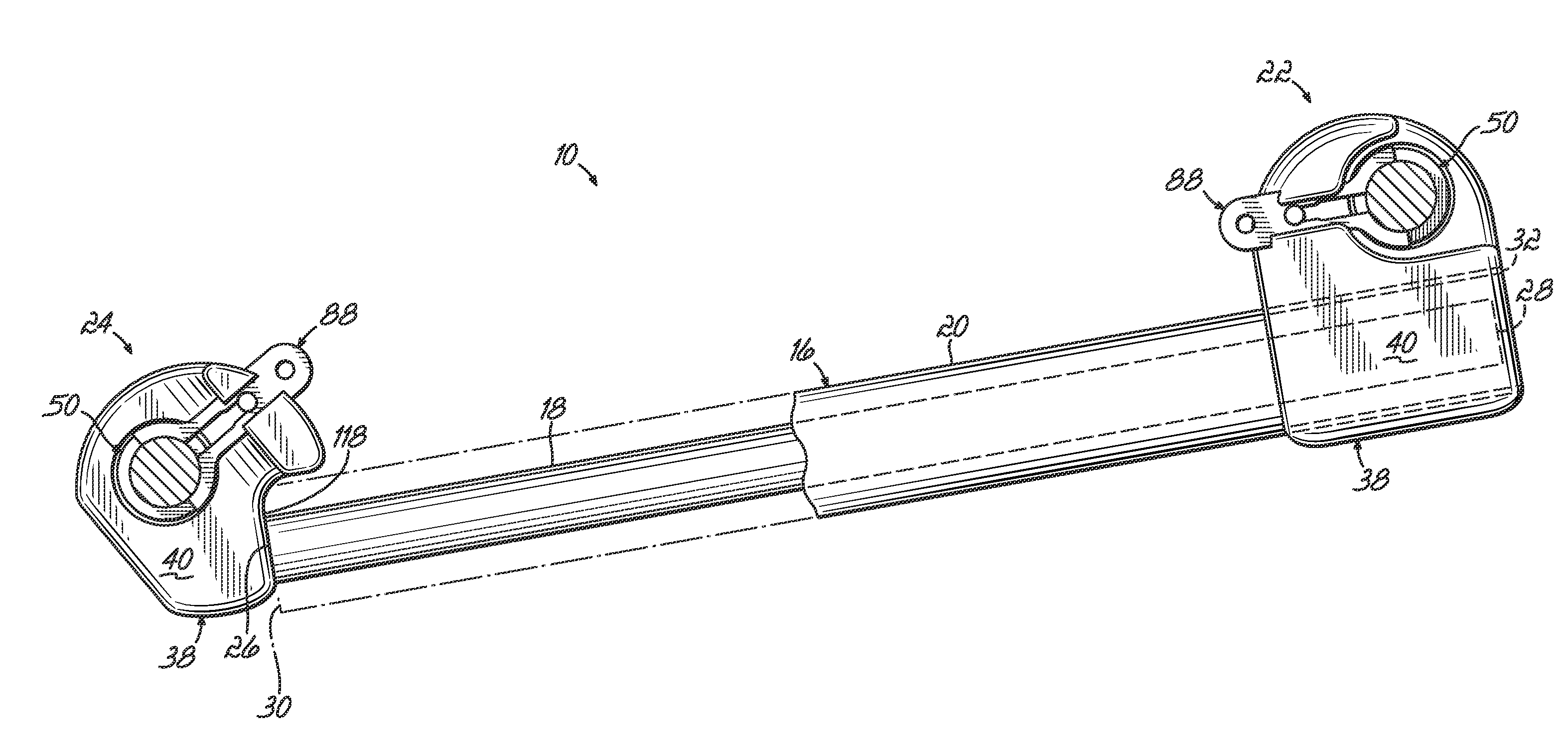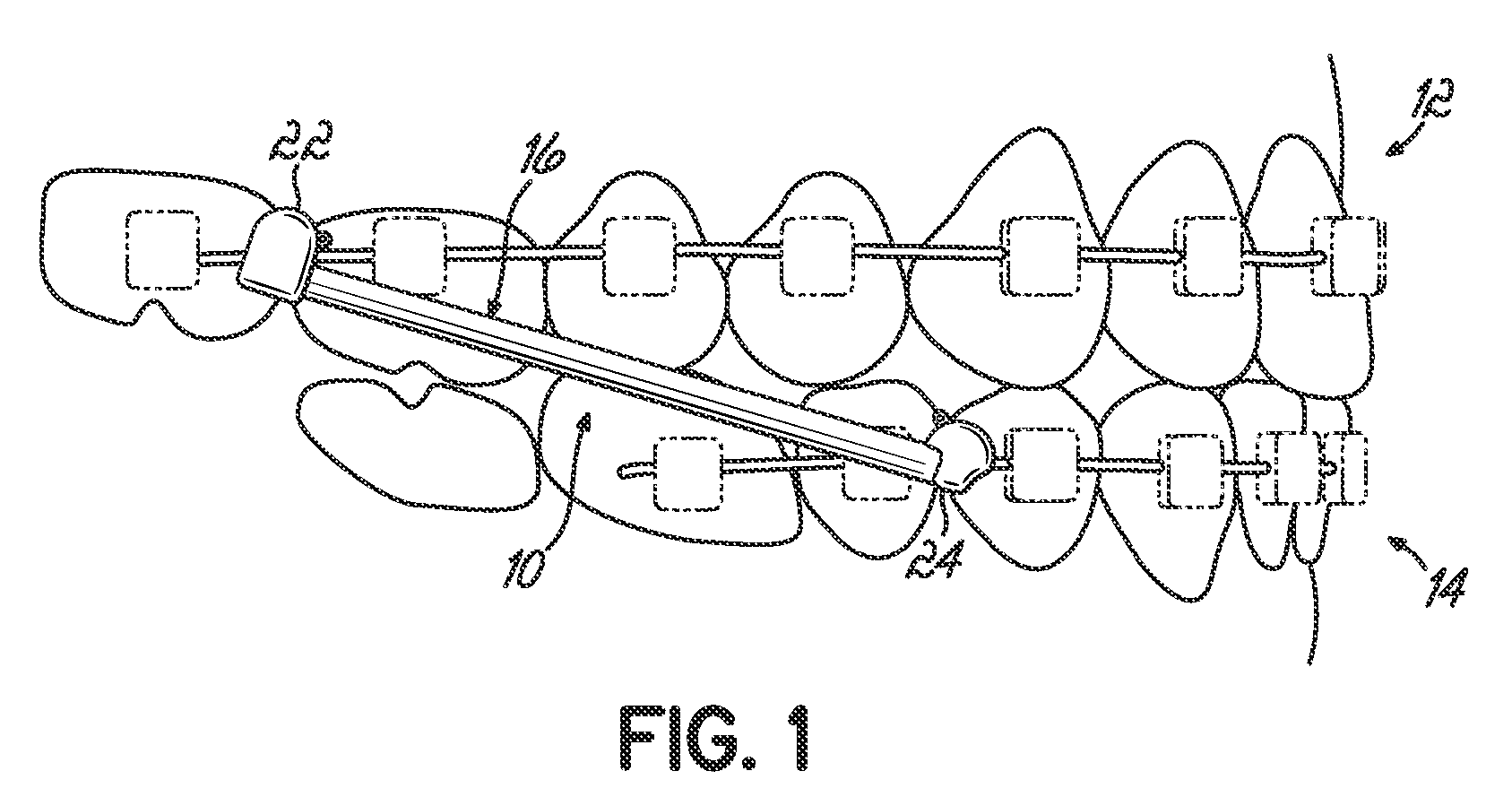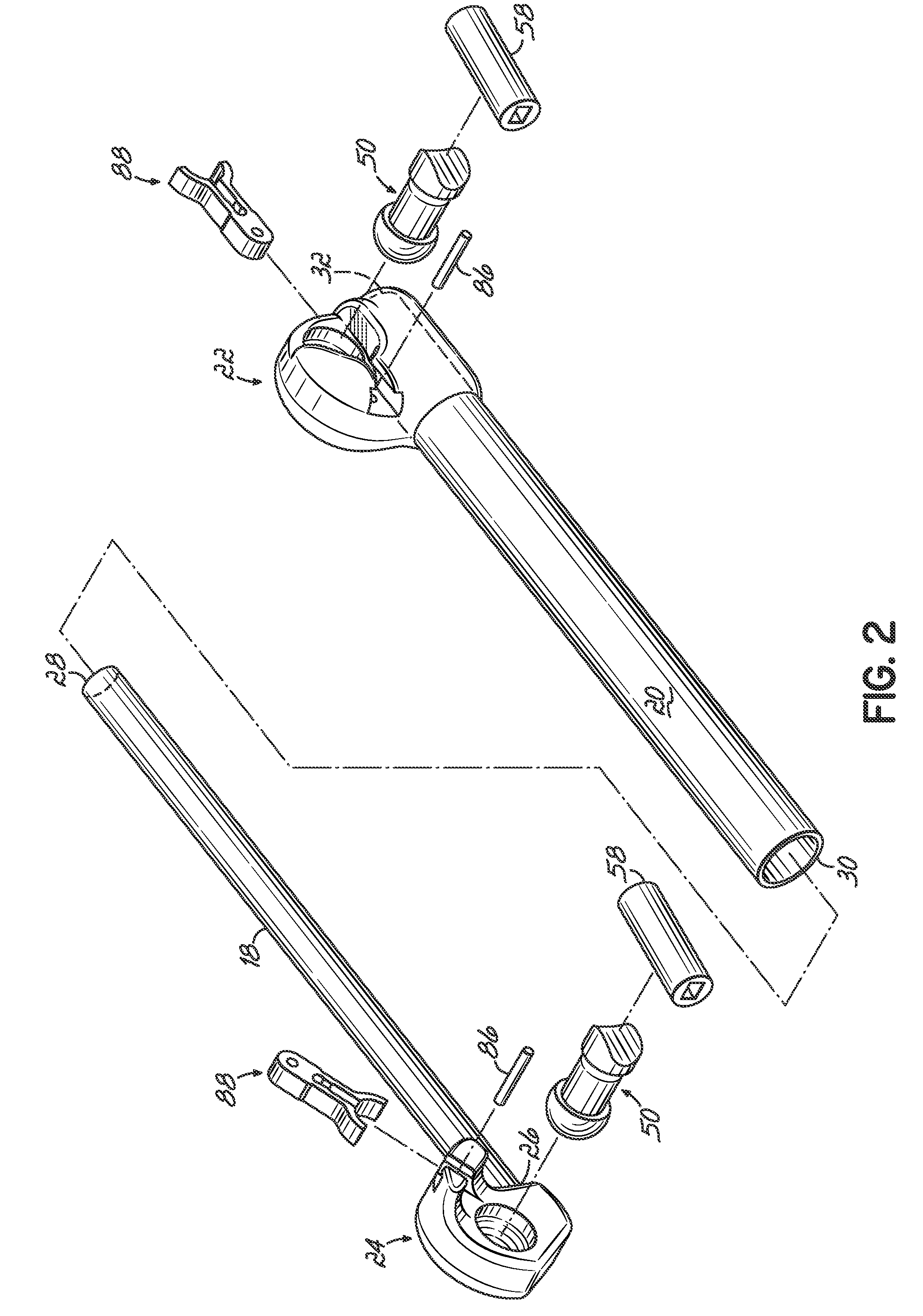Orthodontic device and method for treating malocclusions
a technology of orthodontic devices and malocclusions, applied in the field of orthodontic appliances, can solve the problems of increasing the size and complexity of the inventory, the complex connection between a spring-biased bite corrector and the upper and lower arches, and the drawbacks of the current orthodontic device for the treatmen
- Summary
- Abstract
- Description
- Claims
- Application Information
AI Technical Summary
Benefits of technology
Problems solved by technology
Method used
Image
Examples
Embodiment Construction
[0048]Referring to FIGS. 1-4, an orthodontic device 10 according to one embodiment of the invention may be coupled to the upper dental arch, or maxillary jaw 12, and the lower dental arch, or mandibular jaw 14, so as to reposition the mandibular jaw 14 relative to the maxillary jaw 12 and therefore correct a malocclusion, such as a Class II malocclusion. The orthodontic device 10 includes a telescoping rod assembly 16, comprising an inner rod 18 and an outer sleeve 20, and upper and lower connecting devices 22, 24, respectively.
[0049]The inner rod 18 includes a first end 26 and a second opposed end 28. The first end 26 of inner rod 18 is coupled to the lower connecting device 24. In a similar manner, outer sleeve 20 includes a first end 30 and a second opposed end 32. The second end 32 of the outer sleeve 20 is coupled to the upper connecting device 22. The inner rod 18 is configured to fit within the outer sleeve 20 to provide the telescoping feature of the assembly 16. To this end...
PUM
 Login to View More
Login to View More Abstract
Description
Claims
Application Information
 Login to View More
Login to View More - R&D
- Intellectual Property
- Life Sciences
- Materials
- Tech Scout
- Unparalleled Data Quality
- Higher Quality Content
- 60% Fewer Hallucinations
Browse by: Latest US Patents, China's latest patents, Technical Efficacy Thesaurus, Application Domain, Technology Topic, Popular Technical Reports.
© 2025 PatSnap. All rights reserved.Legal|Privacy policy|Modern Slavery Act Transparency Statement|Sitemap|About US| Contact US: help@patsnap.com



